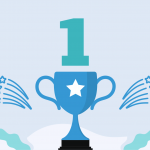Is this superior to “top-down” project planning? Will it replace the former entirely? Are the two mutually exclusive? The answer to all these questions is yes . . . and no. There are some distinctive advantages to the bottom-up approach in almost any industry, but it’s important to have a thorough understanding of where the two theories overlap as well as where they contradict.
Two Kinds of Government Top-Down In top-down project management, decision-making happens at the senior management level, with the project manager as monarch, for lack of a better word. The project manager (or other senior manager) starts with a business strategy and moves into the project, breaking larger goals down into tasks and subtasks and assigning them to team members with guesstimated deadlines.
During the planning phase, there is no direct involvement of lower-level employees, which has led some critics to paint the top-down approach as shortsighted. Without focused expertise from individual team members, project managers can have a difficult time accurately assessing risks and resource requirements. This can cause bottlenecks, or worse: project failure.
Bottom-Up
Bottom-up projects are still led by a project manager or decision-maker, but this person is primarily a facilitator, defining overarching goals and values, then letting team members set their own tasks and to-dos — in some cases even their own deadlines. There is a noticeable demand for this kind of structure in the current workforce. A recent ESI International report revealed that over 65 percent of workers think better team collaboration could improve their organization’s project performance. In contrast with top-down, bottom-up project governance starts with the project itself (tactics) and moves into strategy. Proponents say this helps decision-makers set more realistic expectations.
Bottom-Up Planning Bolsters Collaboration
A “State of Workplace Productivity” report by Cornerstone OnDemand revealed that some 38 percent of workers feel there is not enough collaboration in their workplace—among the top opportunities for improvement: a better ability to share input with different departments. Many companies have already realized the benefits of project collaboration and are moving towards a more democratic process, with technology at the helm. For example, about 75 percent of companies were using social collaboration tools in 2013. Tools like these will continue to gain prominence as they prove their value to efficient project completion.
There are a number of ways that bottom-up planning cultivates better collaboration:
- Encourages team members to make a personal investment: When team members help make the plan and shape its evolution through different stages, they have a bigger stake in whether or not it succeeds and are intrinsically motivated to share their insight between colleagues and teams.
- Builds collective intelligence through the use of technology: Most legacy project management software is designed for top-down, “waterfall” planning. While there is certainly a place for these kind of systems, it’s usually at the enterprise level, for managing resources between a portfolio of projects. The new breed of project management software is more intuitive and flexible, relying on “Web 2.0” technologies for team collaboration, including social networking, wikis, and hosted web applications. This also makes it easier for dispersed teams to stay connected. Instead of ideas being pushed down from management, the continuous flow of information and end-to-end visibility builds a stronger “collective intelligence.”
- Inspires new leadership: In a top-down project, all decision-making power is vested in the project manager, which can limit them to the role of task-master. Nothing can be done until passed up the bureaucratic ladder for approval. Bottom-up, on the other hand, asks the project manager to delegate responsibilities and remove roadblocks to productivity. I.e. “What do you need in order to get this done? What is standing in your way?”
- Hones project focus at the individual task and resource level: Because it starts with project tactics and moves into strategy (instead of the other way around), bottom-up planning helps projects avoid abstraction and focus on practical requirements. And who knows requirements better than the individuals who work in those areas?
***
These advantages are merely side effects that occur when you tap into the agency and expertise of your team members. Take Google, for instance. Their famous “20-percent-time” rule (employees spend one day a week working on their own passion projects) has spawned about half of their current products.
But don’t misunderstand “bottom-up” methodology. It’s not a suggestion to fire your project manager and let anarchy reign. Every project, no matter the scope, requires strong leadership and some planning. Bottom-up is about collaborating on all levels to get things done and capitalizing on your biggest untapped resource: your team.
